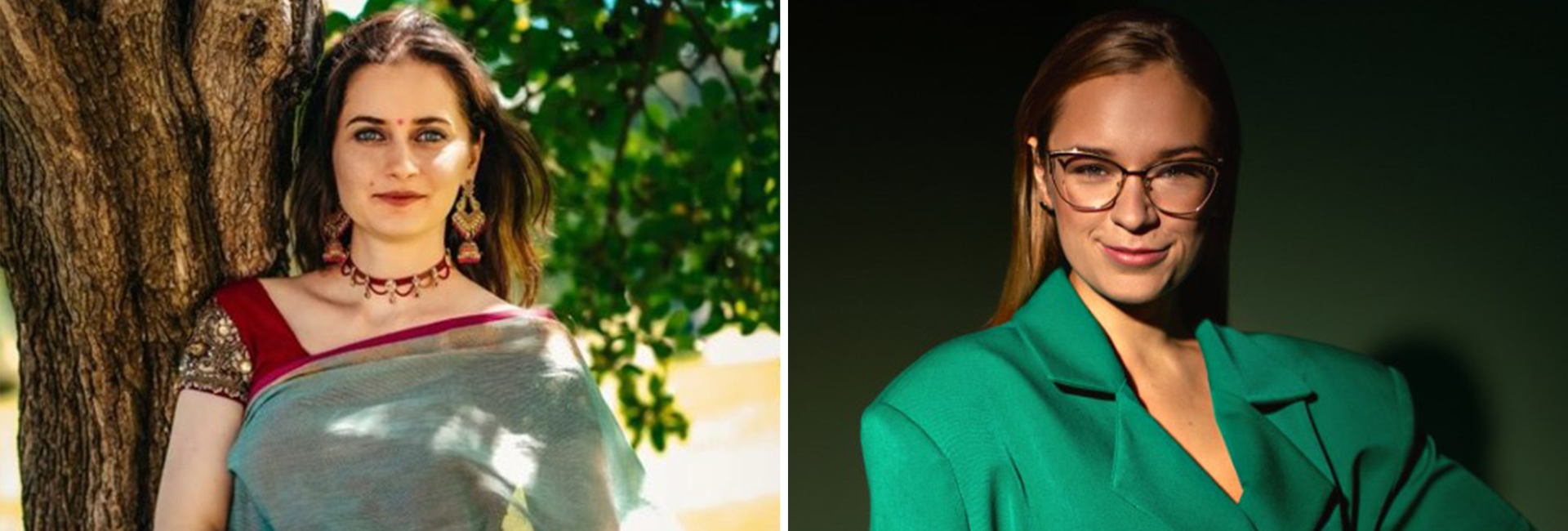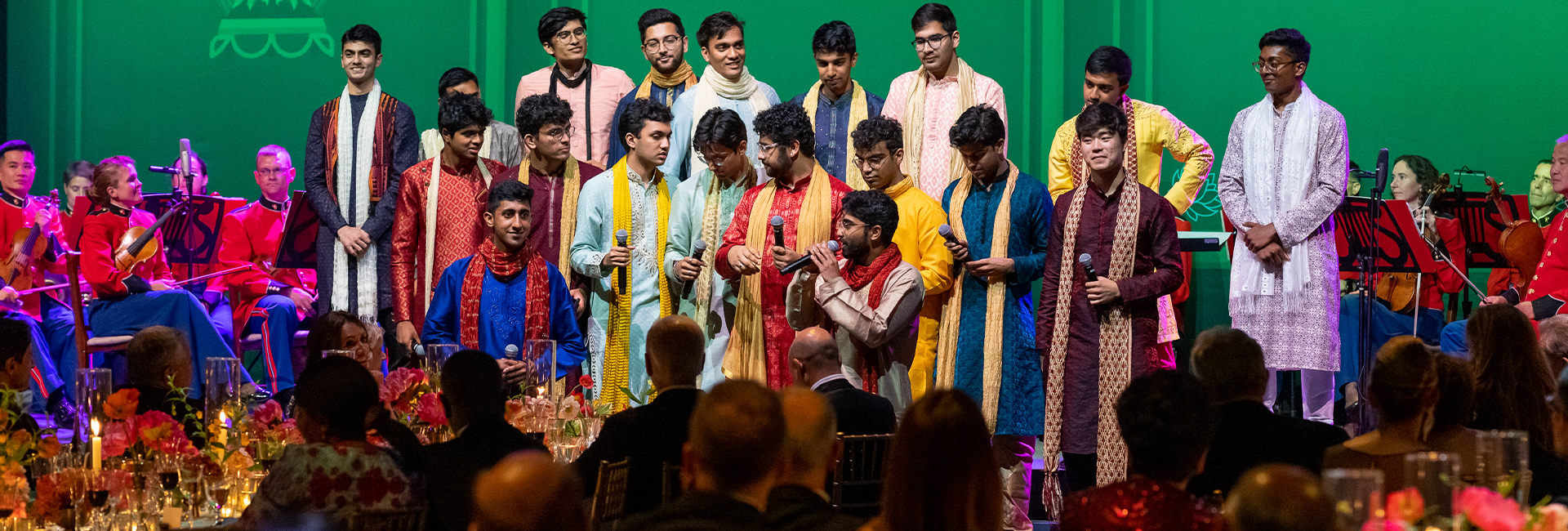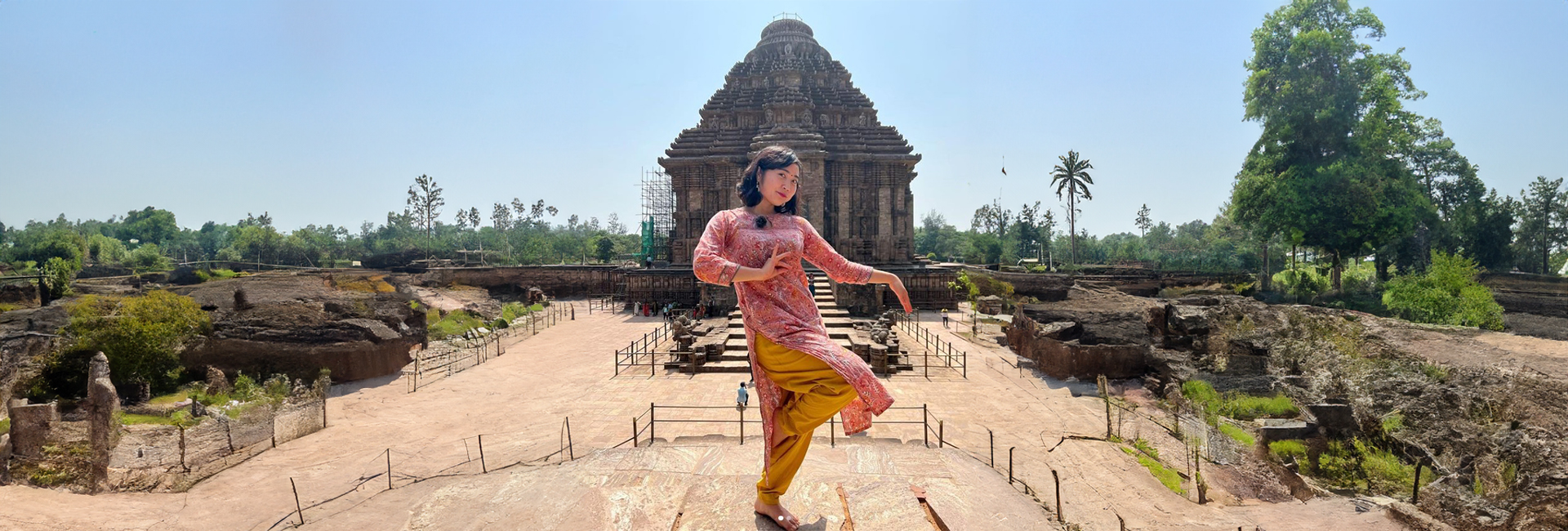(August 24, 2024)In the midst of the ongoing Russia-Ukraine war, PM Modi made a historic visit to Ukraine, meeting with President Volodymyr Zelenskyy. This marked the first time an Indian prime minister has visited Ukraine since the two countries established diplomatic relations over 30 years ago. The visit has garnered significant global attention, with many expecting the Indian prime minister to play a mediating role. Global Indian reached out to two young Ukrainian nationals to get their perspectives on Prime Minister Modi’s visit to Ukraine during these trying times of war.
It’s rare for Viktoria Burenkova to be in the audience. Typically, during big events or special occasions, she’s the one captivating crowd with her Bharatanatyam performances. As a regular performer at events organised by the Embassy of India in Ukraine, she was invited to attend Prime Minister Modi’s reception ceremony in the country. The Ukrainian Bharatanatyam dancer, who performs under the stage name Vijaya Bai, is passionate about the art form and teaches it in Kyiv, despite never having visited India.
Meanwhile, Yevheniia Fedotova, a product manager by profession, spent a year in India as an ICCR scholar in 2017-18 and visited the country again last year. With a deep passion for volunteerism, she is associated with an NGO as its vice-president, and has been voluntarily coordinating the Ukrainian parliament’s deputy group on inter-parliamentary affairs with the Republic of India. Based in Kyiv, she works for Convosight, an Indian multinational firm with headquarters in Gurugram.
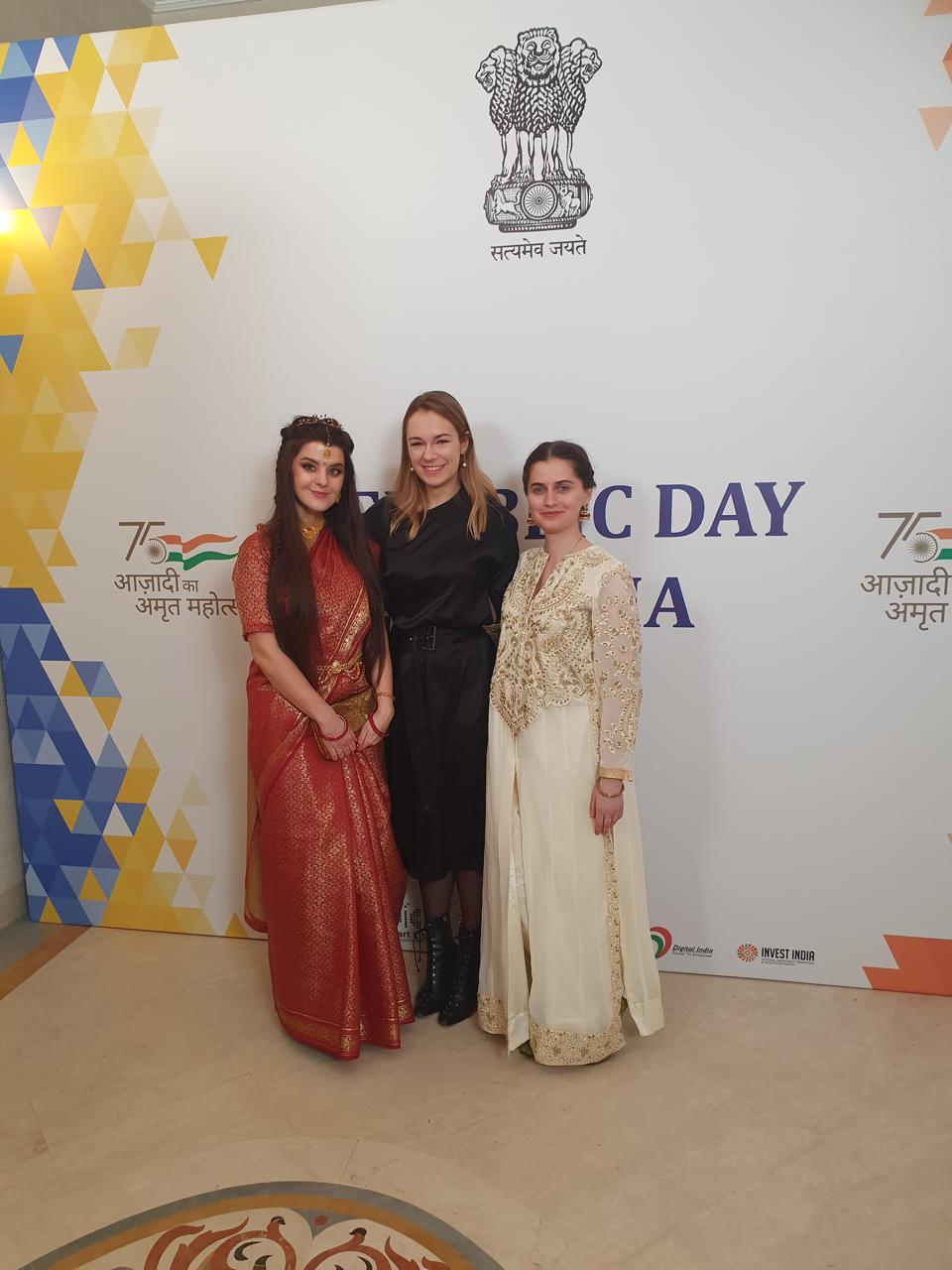
Viktoria (right) and Yevheniia (centre) during India’s Republic Day celebration in Ukraine in 2022
The young women who have deep love and respect for India shared their opinions and expectations about the Indian PM’s visit to their country during these tough times:
Viktoria Burenkova
Bharatnatyam exponent and teacher
“We face challenges every day because of Russia, but life goes on. We have to keep working and supporting our army because, honestly, what else can we do? Everyone here is affected, even if you are living in a relatively safe area. Your relatives and neighbours might be in the army, so you are constantly stressed. Shelling happens often, and one hears the air raid alarms five-ten times a day, depending upon the situation. Even when you are sleeping, you hear it, and you never know if the next bomb will hit your house. We don’t expect things to be fine anytime soon. The war impacts every aspect of life, including mental health.
When we watch the news, we see our soldiers. Those of us who have stayed back feel a deep sense of support for our army men. We are hopeful about the Indian PM visit because India possesses one of the world’s richest and most profound philosophies. Every war is essentially a battle between good and evil, and the most important thing is to be on the side of good.
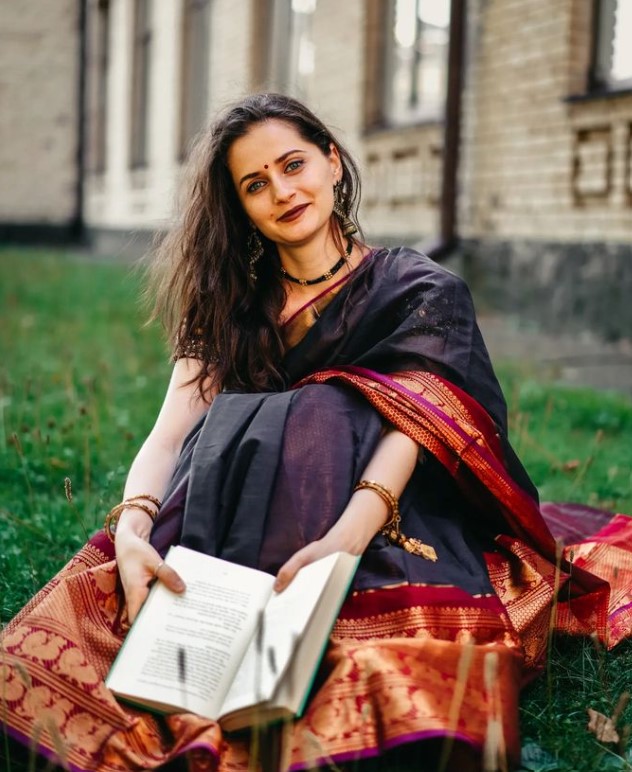

Viktoria Burenkova
As India is a spiritual country, we believe that by coming here, seeing what’s happening, meeting our people, talking to our President, and listening to his perspective, Mr Modi can play a significant role as a mediator in this situation by understanding Ukraine’s perspective. We truly hope for a positive outcome from this visit. We trust in India’s Vedic system, knowing that India has the capability to discern what is right and wrong, and to align with what is just and moral.”
In many ways, we are similar to India – our emotions, our traditions – and we have warm feelings for India. The Indians living here, despite the war, are so helpful, always trying to explain Ukraine’s perspective to others.
Viktoria attended the event with a few members of her dance school, Nakshatra. “All of us were truly honoured to be invited to such a high-profile occasion. Some of us wore saris while others chose the traditional Ukrainian dress, the Vyshyvanka,” she shared.
Yevheniia Fedotova
Social activist and project manager in a multinational firm
“I feel happy because this is the first time India’s Prime Minister has visited an independent Ukraine. There was a visit in 1982 by late Indira Gandhi, but that was long ago when Ukraine was still part of the USSR.
However, I am unsure whether Modi’s approach to peace in Ukraine aligns with the vision of the Ukrainian people. I worry that if there is a discrepancy between Modi’s peace efforts and Ukraine’s expectations, it might lead to significant disappointment on both sides. As I understand it, India is making mediation efforts to achieve a peaceful resolution to the war. We want peace too, but our enemy, Russia, is not a country that respects diplomacy or international order – it only understands power, particularly nuclear power.
India has strong defence capabilities and can speak to Russia, and Russia depends on India. However, Russia also has some influence in India, and unfortunately, that influence is not beneficial for Ukraine. Russia is a vast country with a large population and more resources than we have. India may give some preference to Russia, not because of any goodwill on Russia’s part, but because India cares for the safety for its own people.


Yevheniia Fedotova
To be honest, if there were no war and India remained friends with Russia, it wouldn’t bother me. But in these times, when Ukrainians – and especially the Indian students here – are under so much stress, it’s hard to accept that Russia seems more significant to India.
We have hope from Modi’s visit, but we are concerned that he might push for freezing the conflict. For Ukraine, freezing the conflict would mean we wouldn’t regain our territories, and our prisoners wouldn’t return home.
We want peace, but that peace must include regaining our land and bringing our people back from captivity. We are grateful for the humanitarian aid India has sent us. I believe that if Ukraine wins, it will set a strong precedent—that if a small country like Ukraine can reclaim its territories, it will set an example for India that its borders, as marked by the United Nations, will remain secure from any encroachment by China. India should be more invested in a Ukrainian victory.”
Love and expectations from India
Both Viktoria and Yevheniia are in their late 20s. As a dance exponent with an Indian stage name, Viktoria’s life is structured around Bharatanatyam. She started learning Hindi at the age of 18 and can speak a little in Telugu and Punjabi as well.
While Yevheniia pursued her bachelor’s and master’s in Hindi at the Taras Shevchenko University in Ukraine, and studied for a year at the Kendriya Hindi Sansthan in New Delhi. Like Viktoria she holds a deep affection for India, having experienced the beauty of the country and its people. “I even defend India when friends criticise it, saying, ‘Look at how much oil India is purchasing from Russia,’” she laughs. “But that doesn’t mean India is bad; India is a good nation, I tell them.”
Like other young Ukrainians, both Viktoria and Yevheniia hope that world leaders, including the Indian PM, will understand their country’s perspective and support their nation in overcoming the crisis without having to bow down.

